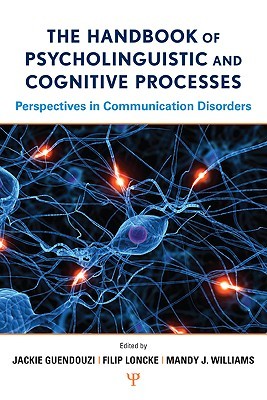
- We will send in 10–14 business days.
- Publisher: Psychology Press
- Year: 2010
- Pages: 872
- ISBN-10: 1848729103
- ISBN-13: 9781848729100
- Format: 15.5 x 23.1 x 4.3 cm, kieti viršeliai
- Language: English
- SAVE -10% with code: EXTRA
The Handbook of Psycholinguistic and Cognitive Processes (e-book) (used book) | bookbook.eu
Reviews
Description
This handbook includes an overview of those areas of cognition and language processing that are relevant to the field of communication disorders, and provides examples of theoretical approaches to problems and issues in communication disorders.
The first section includes a collection of chapters that outline some of the basic considerations and areas of cognition and language that underlie communication processing; a second section explains and exemplifies some of the influential theories of psycholinguistic/cognitive processing; and the third section illustrates theoretical applications to clinical populations.
There is coverage of theories that have been either seminal or controversial in the research of communication disorders. Given the increasing multi-cultural workload of many practitioners working with clinical populations, chapters relating to bilingual populations are also included.
The volume book provides a single interdisciplinary source where researchers and students can access information on psycholinguistic and cognitive processing theories relevant to clinical populations. A range of theories, models, and perspectives are provided. The range of topics and issues illustrate the relevance of a dynamic interaction between theoretical and applied work, and retains the complexity of psycholinguistic and cognitive theory for readers (both researchers and graduate students) whose primary interest is the field of communication disorders.
EXTRA 10 % discount with code: EXTRA
The promotion ends in 21d.17:40:12
The discount code is valid when purchasing from 10 €. Discounts do not stack.
- Publisher: Psychology Press
- Year: 2010
- Pages: 872
- ISBN-10: 1848729103
- ISBN-13: 9781848729100
- Format: 15.5 x 23.1 x 4.3 cm, kieti viršeliai
- Language: English English
This handbook includes an overview of those areas of cognition and language processing that are relevant to the field of communication disorders, and provides examples of theoretical approaches to problems and issues in communication disorders.
The first section includes a collection of chapters that outline some of the basic considerations and areas of cognition and language that underlie communication processing; a second section explains and exemplifies some of the influential theories of psycholinguistic/cognitive processing; and the third section illustrates theoretical applications to clinical populations.
There is coverage of theories that have been either seminal or controversial in the research of communication disorders. Given the increasing multi-cultural workload of many practitioners working with clinical populations, chapters relating to bilingual populations are also included.
The volume book provides a single interdisciplinary source where researchers and students can access information on psycholinguistic and cognitive processing theories relevant to clinical populations. A range of theories, models, and perspectives are provided. The range of topics and issues illustrate the relevance of a dynamic interaction between theoretical and applied work, and retains the complexity of psycholinguistic and cognitive theory for readers (both researchers and graduate students) whose primary interest is the field of communication disorders.


Reviews